Affiliate links on Android Authority may earn us a commission. Learn more.
Why I bought the MacBook Air and not the Pro
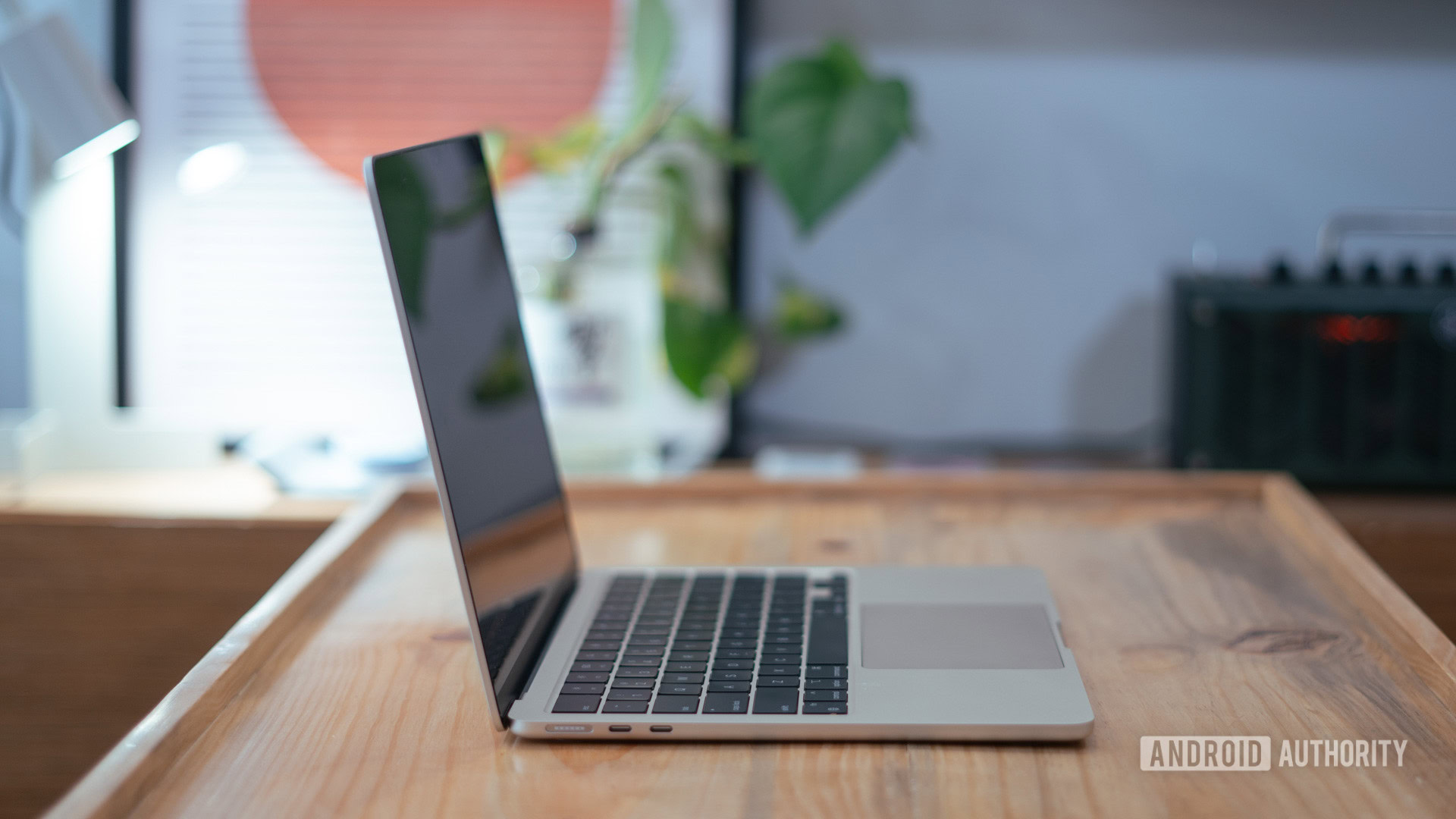
I’ve been using MacBooks for almost 14 years. Call me a creature of habit, but six machines later, when it came time to upgrade my laptop, it was clear that my next machine would be yet another addition from Apple’s stable.
Previously, the decision had been easy. I’m a pro user with pro needs, and only a MacBook Pro would cut it. That’s not entirely the case anymore. Apple’s M-series silicon has flipped the game altogether and leapfrogged the Intel and AMD competition in all but gaming. The M3-powered MacBook Air piqued my curiosity.
A Pro-user needs a Pro-machine. The MacBook Air flips that thought on its head.
However, I’d burnt my fingers on a MacBook Air once. That machine barely lasted me weeks before I turned it in and upgraded to a — you guessed it — MacBook Pro. But despite my apprehensions, I decided to give the all-new MacBook Air M3 a shot over the Pro. I don’t regret it. Here’s why.
Do you own a new MacBook Air (M-series)?
Why I chose the MacBook Air
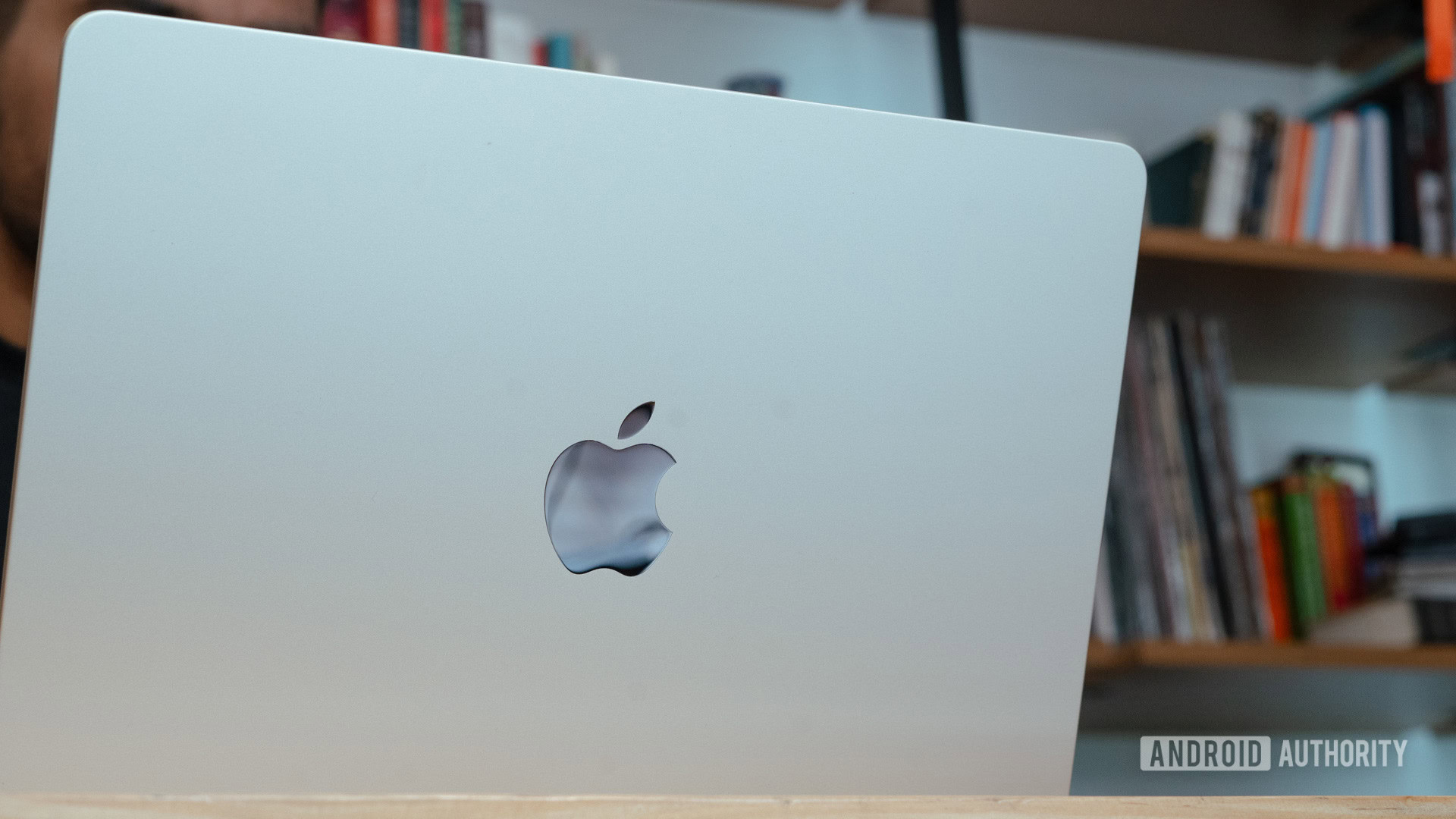
My work requires researching, reading, and staying on top of the latest news. Opening several dozens of tabs simultaneously isn’t uncommon. Plus, I’ll usually have an instance of Photoshop or Lightroom open and Spotify and Slack running in the background. Add Notion to the mix for note-taking and a few more utilities, and the workload adds up.
In the past, this workload alone would have my old MacBook Pro huffing and puffing. In fact, I don’t remember a time when the fan wasn’t spinning at full blast. Sure, I could learn to manage my computational load better, but chaotic good tends to be my default work state. I expect my machine to keep up with me, and I don’t mind pushing the laptop to its limits.
My working style is chaotic good, and I expect my machines to keep pace.
Lately, however, I’ve felt the itch for a different machine. With more and more travel and, well, age catching up, I’ve started appreciating the benefits of a lighter laptop. More importantly, with the pandemic long behind us, I like working out of cafes or while traveling. Long battery life is essential to me. It was clear that I needed an upgrade from my hulking Intel MacBook Pro, and the new M3-powered MacBook Air seemed like the obvious choice. I was prepared to compromise on performance if need be.
How’s the performance of the M3-powered MacBook Air?
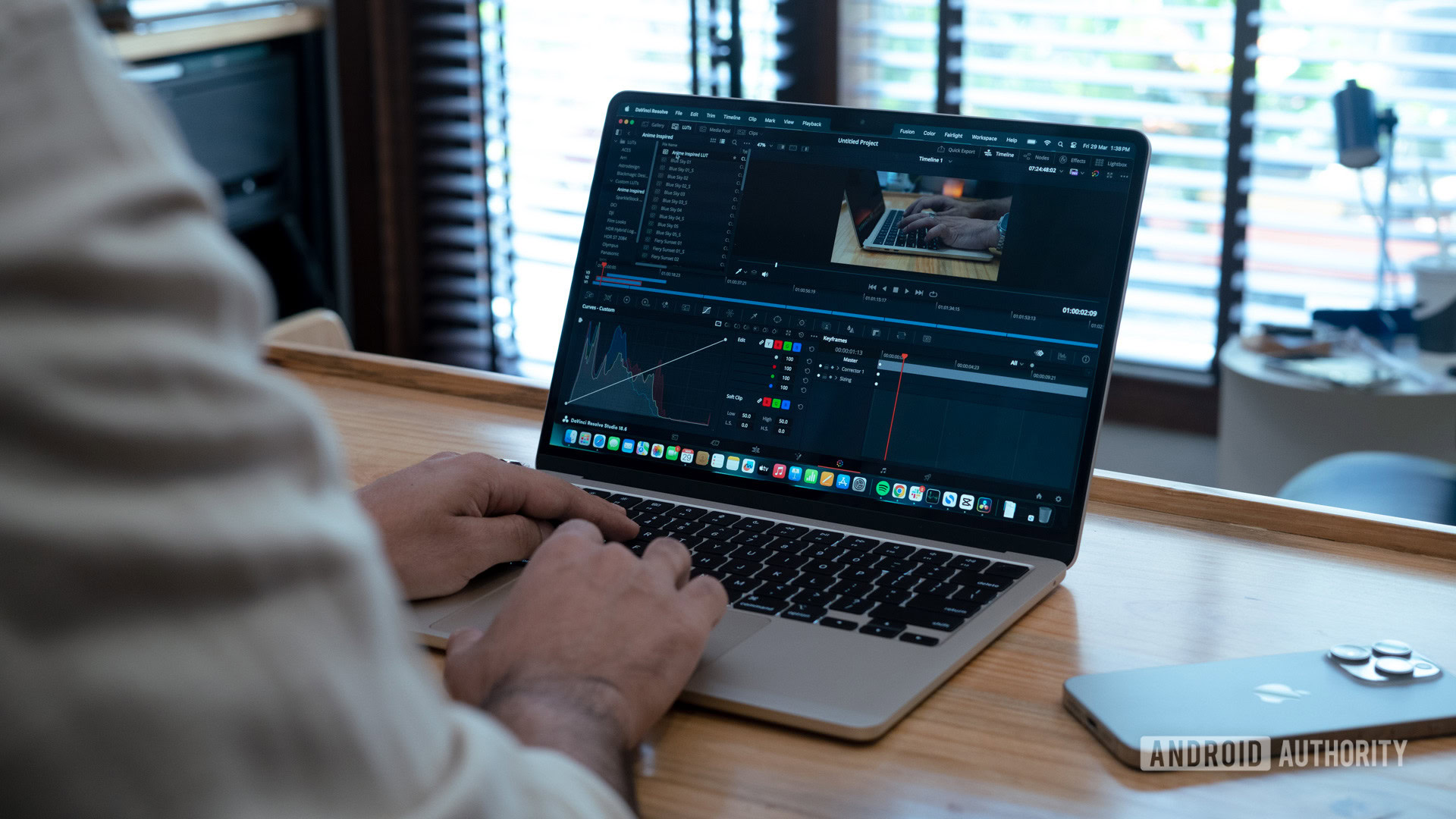
As it turns out, I needn’t have worried. The MacBook Air runs circles around the my old Pro without even breaking a sweat. This shouldn’t surprise anyone who has used a recent M-series MacBook. But bear with me.
100 chrome tabs? No sweat. The M3-powered MacBook Air runs circles around it.
I’m a heavier-than-average laptop user. When I mention opening Chrome tabs, it’s not a few or even a dozen. I often have 50 or even a hundred tabs split across browsers and macOS desktops. I’m using the 16GB RAM and 512GB storage variant of the MacBook Air, and I’ve faced no slowdowns at all at any point. It keeps chugging along like any other day.
Sure, browser-based workflows might not paint the complete picture of a laptop’s performance, but creative apps can. Between Da Vinci Resolve, Premier Pro, Photoshop, and Lightroom, I run the whole gamut of creative apps. And that’s where the performance improvements really start showing up. Apple knows its audience, and switching to the M-series silicon gave it the freedom to build in media accelerators and NPUs tuned explicitly to the needs of its customers.
Compared to my old Intel Mac’s hour-long thermal throttled meltdown while rendering a 4K video, the MacBook Air pulls it off in seconds. The difference is night and day.
The NPU-enhancements to the M3 silicon do a lot of the heavy lifting in tasks that take advantage of it.
Before looking into the M3-powered MacBook Air, I’d briefly considered settling for an M1 or M2 unit instead. Great as the M3 version is, highlight changes like dual monitor support and a new anodized finish didn’t seem all that critical. However, the thing about building a machine so far ahead of the curve is that generational improvements don’t seem like much. For the sake of fairness, I borrowed a friend’s M1-series MacBook Air. While the M1 silicon was still leagues ahead of my Intel MacBook Pro, placing the two next to each other painted a truer picture of the noticeable speed enhancements with the M3. In fact, the M3 MacBook proved to be almost double as fast as the M1 MacBook Air in many of my daily tasks.
One of the biggest upgrades this year has been to the Neural Engine. Optimized for machine learning and AI-based tasks, it is supposed to be up to 60% faster than the one on M1 Silicon. If there’s something to be said about the Apple ecosystem, it’s the fact that popular developers are quick to build features that push the hardware’s limits. Apps like Luminar Neo take full advantage of the NPU cores to deliver faster edits and Generative AI-style features. If that’s your use case, you’ll absolutely notice the year-on-year improvements.
But three weeks on, what truly boggles the mind is this laptop’s ability to pull off incredible performance without sacrificing battery life. Apple’s 18-hour claims are a bit hard to gauge as I don’t sit at my computer with a stopwatch in hand. However, I’ve been using this laptop for the last three days without recharging. In the meantime, I’ve penned down this entire feature, ideated and scripted two videos, edited them, and watched a movie on Netflix. That’s bonkers!
Beautifully flawed
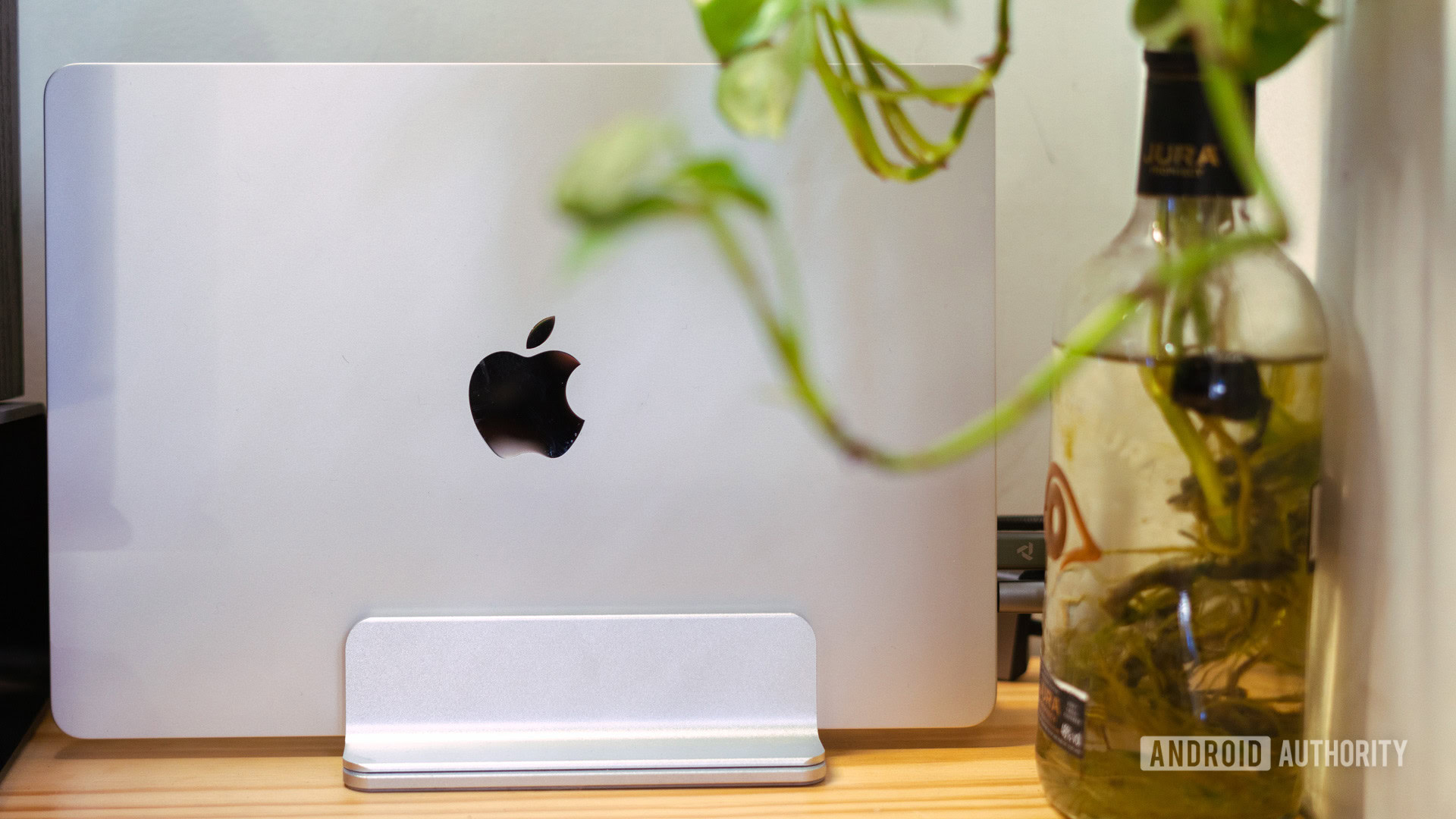
But despite all those positives, it is pretty clear to me that as far as M-series silicon has come, it isn’t perfect yet. For example, while the MacBook Air gets dual-screen support with the M3 refresh, you must close the lid to enable it.
While not a dealbreaker, that’s absurd to me as I’m used to keeping the laptop screen open as a third monitor. Additionally, it’s not just screen real estate that you’re losing out on. The MacBook Air uses its keyboard to dissipate heat. With the screen shut and the laptop presumably doing computationally intensive work across dual displays, there’s a noticeable dip in performance due to reduced heat dissipation. For example, video rendering time almost doubled for me in a quick test. It was still plenty fast, but the difference is noticeable and negates some of the advantages of the faster chip.
Even Apple must see the ridiculousness of shipping a $1100 laptop with 8GB of RAM.
Elsewhere, Apple’s penny-pinching still bites. Shipping 8GB of RAM as the default in a 2024 laptop is hilarious but not as ironically funny as Apple’s RAM upgrade prices. Here’s the thing: I can see Apple’s reasoning for the default amount of RAM. The tight software and hardware integration and fast RAM mean you probably wouldn’t run out of RAM under common use cases. I borrowed an M2 MacBook Air with 8GB of RAM and was surprised by how well it could manage a higher-than-average workload. The system seamlessly manages memory swaps, making any RAM limitations transparent to users.
In fact, it takes deliberate effort and very heavy use to drop into page swap territory on my 16GB machine. There’s also a point to be made that someone buying a base-level MacBook Air likely isn’t an enthusiast user anyway. But Apple’s choice to stick with 8GB as the default is sheer stubbornness. It would cost the company pennies to upgrade the base amount of RAM and simultaneously eliminate all the bad press stemming from it. At a time when phones ship with more RAM than your laptop, shipping the bare minimum and charging an arm and a leg for an upgrade just reeks of capitalism.
The dire port situation is made worse by the flaky backwards compatibility.
Finally, I’ve had my fair share of issues using legacy hardware with my new MacBook. For example, my mechanical keyboard tends to lag when plugged into the Air. My OWC Thunderbolt dock refuses to work with the MacBook Air. My guitar amp, too, doesn’t work with the laptop. If it were one device that acted flaky, I’d blame it on the peripheral. However, a series of devices not working correctly suggests backward compatibility issues with the Mac.
MacBook Air M3: The laptop perfected
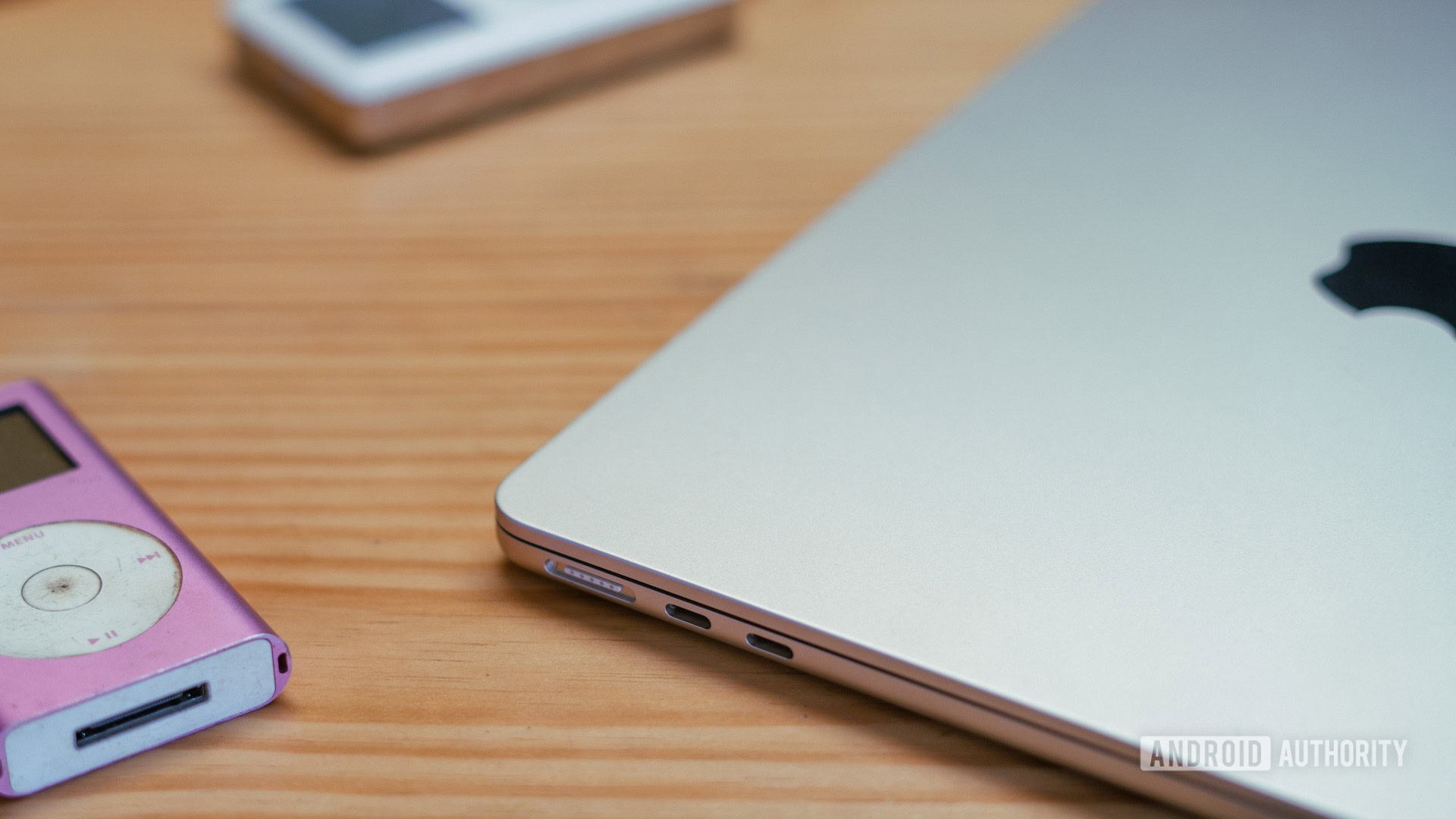
It’s hard not to be impressed by the MacBook Air. Apple has seemingly performed magic to deliver performance akin to a high-end laptop from a machine with the form factor of a glorified Chromebook. It also represents a whole new era of portable computing. As far as Apple’s laptops go, based on my experience, the distinction between user demographics has never been more apparent.
The MacBook Air has clearly transcended from its ultrabook origins and is the obvious choice for all but professionals and big spenders.
The MacBook Air isn’t just Apple’s entry-level battery-life-focused laptop anymore. It’s got more than enough power to satiate enthusiasts. Meanwhile, the Pro lineup is genuinely for the Pros. If you’re a professional whose living depends on ultra-fast edits, capable music production, or compiling large code bases, by all means, go for the Pro. Or perhaps you want to splurge and get the best there is. There is no harm in that, either. But, by and large, the average hobbyist YouTube creator, Soundcloud music producer, and weekend photographer will find it hard to stress the limits of the current MacBook Air lineup.
Early adopters of the M-series silicon might be chuckling at me going gaga over Apple’s latest laptop. However, I’m just one of thousands, if not millions, of users who will finally be upgrading to the new MacBook about five years into the last Intel MacBook Air’s lifecycle. And with the M3 range, Apple has perfected the formula and released a laptop that caters to the 90%. I’d go as far as saying that for the sheer amount of power on hand, this is the most value-for-money machine Apple has released.